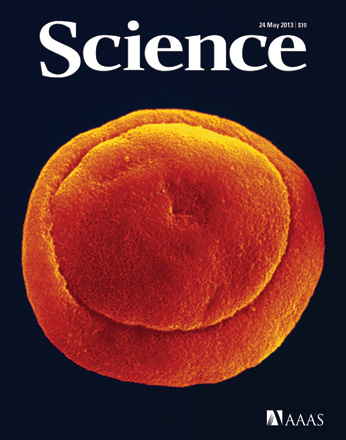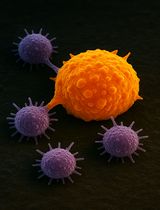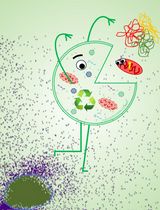- EN - English
- CN - 中文
Quantification of T Cell Antigen-specific Memory Responses in Rhesus Macaques, Using Cytokine Flow Cytometry (CFC, also Known as ICS and ICCS): from Assay Set-up to Data Acquisition
细胞因子流式细胞检测法量化恒河猴T细胞特异性抗原的记忆反应:从分析计划到数据采集
发布: 2014年04月20日第4卷第8期 DOI: 10.21769/BioProtoc.1110 浏览次数: 17890
评审: Jia LiAnonymous reviewer(s)

相关实验方案

外周血中细胞外囊泡的分离与分析方法:红细胞、内皮细胞及血小板来源的细胞外囊泡
Bhawani Yasassri Alvitigala [...] Lallindra Viranjan Gooneratne
2025年11月05日 1329 阅读
Abstract
What was initially termed ‘CFC’ (Cytokine Flow Cytometry’) is now more commonly known as ‘ICS’ (Intra Cellular Staining), or less commonly as ‘ICCS’ (Intra Cellular Cytokine Staining). The key innovations were use of an effective permeant (allowing intracellular staining), and a reagent to disrupt secretion (trapping cytokines, thereby enabling accumulation of detectable intracellular signal). Because not all researchers who use the technique are interested in cytokines, the ‘ICS’ term has gained favor, though ‘CFC’ will be used here.
CFC is a test of cell function, exposing lymphocytes to antigen in culture, then measuring any cytokine responses elicited. Test cultures are processed so as to stain cells with monoclonal antibodies tagged with fluorescent markers, and to chemically fix the cells and decontaminate the samples, using paraformaldehyde.
CFC provides the powers of flow cytometry, which includes bulk sampling and multi-parametric cross-correlation, to the analysis of antigen-specific memory responses. A researcher using CFC is able to phenotypically characterize cells cultured with test antigen, and for phenotypic subsets (e.g. CD4+ or CD8+ T cells) determine the % frequency producing cytokine above background level.
In contrast to ELISPOT and Luminex methods, CFC can correlate production of multiple cytokines from particular, phenotypically-characterized cells. The CFC assay is useful for detecting that an individual has had an antigen exposure (as in population screenings), or for following the emergence and persistence of antigen memories (as in studies of vaccination, infections, or pathogenesis). In addition to quantifying the % frequency of antigen-responding cells, mean fluorescence intensity can be used to assess how much of a cytokine is generated within responding cells.
With the technological advance of flow cytometry, a current user of CFC often has access to 11 fluorescent channels (or even 18), making it possible to either highly-characterize the phenotypes of antigen-responding cells, or else simultaneously quantify the responses according to many cytokines or activation markers. Powerful software like FlowJo (TreeStar) and SPICE (NIAID) can be used to analyse the data, and to do sophisticated multivariate analysis of cytokine responses.
The method described here is customized for cells from Rhesus macaque monkeys, and the extensive annotating notes represent a decade of accumulated technical experience. The same scheme is readily applicable to other mammalian cells (e.g. human or mouse), though the exact antibody clones will differ according to host system. The basic method described here incubates 1 x 106 Lymphocytes in 1 ml tube culture with antigen and co-stimulatory antibodies in the presence of Brefeldin A, prior to staining and fixation.
[Historical Background] The first report of fixing and permeabilizing lymphocytes, then staining them with antibodies against IFN gamma, was made by Andersson et al. in 1989. In 1991, Sander et al. demonstrated improved methods, using paraformaldehyde to fix cells, saponin (an amphipathic glycoside) to permeabilize them, and fluorescently-labeled antibodies to stain intracellular cytokines for microscope examination. In 1993, Jung et al. extended this method for use with flow cytometry, included monensin (a polyether antibiotic ionophore which blocks intracellular protein transport) to inhibit secretion, so as to increase the intracellular signal of the cytokine molecules that would otherwise be released soon after synthesis. In 1995, Prussin and Metcalfe used directly-conjugated antibodies, and reported good results with 6 h incubations. Also in 1995, Picker et al. considerably enhanced the sensitivity and reproducibility of cytokine detection by using Brefeldin A (‘BfA’, a fungal lactone antibiotic) to block the cytokine-secretion apparatus, and by using a different permeant (Tween-20). This improved method was applied by Picker et al. in a 1997 report of the antigen-specific homeostatic mechanism in human HIV+ patients. In 2001, Schuerwegh et al. confirmed that BfA provides better cytokine signal in the assay than does monensin, though monensin is still used widely by others in this method.
Regarding non-human primate studies, two reports in 1989, one by Gardner and another by McClure, showed that Rhesus macaques were a useful model for studying HIV disease and AIDS. In 2002, Picker et al. reported the application of a specially-modified CFC assay to Rhesus macaques. In 2012, a consortium-appointed group aiming to establish standards for collaborating groups using CFC in Rhesus vaccine studies published their recommendations for a 96-well plate method with a 6 h total incubation (Donaldson et al., 2012; Foulds et al., 2012).
The general procedure reported here is that 2002 tube-format (see Note 1) method, now with a 9 h total incubation, and optimized especially for low-end sensitivity. The specific details here are the state of the art now practiced by the Picker Lab, at the Oregon Health and Science University, affiliated with the Oregon National Primate Research Center. These methods have been used in several of our recent publications (Hansen et al., 2013a; Hansen et al., 2013b, Fukazawa et al., 2012; Hansen et al., 2011; Hansen et al., 2009). It is important to note that in our hands, plate-format CFC is not as sensitive and reproducible for weak responses as is this tube-based method described here (unpublished observations). Until that difference is understood and solved, the tube-based method remains the most-sensitive format for CFC.
Materials and Reagents
- Lymphocyte suspension from Rhesus macaques blood (Note 2) or bronchoaveolar lavage (BAL), or harvest from solid biopsy or necropsy tissue, cell density determined by a method accurate for the sample (Notes 3 and 4)
- Need ~1 x 106 viable lymphocytes per test
- Freshly-obtained (Note 5)
- OR thawed cryopreserved sample (Note 6)
- Need ~1 x 106 viable lymphocytes per test
- Antigen
- Negative control(s) (Note 9)
- Positive control:
Superantigen Staphylococcus Enterotoxin B SEB (Note 10) (Toxin Technology, catalog number: BT202 ) (lyophilized powder, 100 μg; stock: 100 μg/ml in water; usage: 2 μl/test) - Other positive control (experiment-specific)
- Peptide mixes (1-100 different peptides, at ≥ 2 μg/peptide/1 ml-test) 15 amino acid peptides (15 mers) overlapping by 11 amino acids
- Negative control(s) (Note 9)
- Antibody
- Unconjugated antibody for costimulation during culture incubation (Note 11)
Anti-CD28, pure unconjugated, clone CD29.2 (Note 12)
Anti-CD49d, pure unconjugated, clone 9F10
Stocks diluted to 0.5 mg/ml; use 1 μl per 1 x 106 Ly - Essential fluorophore-conjugated monoclonal antibodies
The fluorophores you use are dependent upon the flow cytometer available to you. Many companies sell the appropriate fluorophore-conjugated antibodies, including BD, Beckman Coulter, Life Technologies, InvitrogenTM, eBiosciences, and many others.
Anti-CD3e, clones reactive with Rhesus (SP34-2, FN18)
Anti-CD4 (L200, MT477))
Anti-CD8a (SK1, RPA-T8)
Anti-CD69 (FN50, CH/4, TP1.55.3) (Note 13)
Anti-IFNg (B27)
Anti-TNFa (MAB11) - Optional fluorophore-conjugated monoclonal antibodies
Anti-CD45 (DO58-1283) (Note 14)
Anti-IL2 (MQ1-17H12)
Anti-MIP1b (D21-1351)
Ant-CD107 (alpha: H4A3, beta: H4B4) (Note 15)
Anti-CD95 (DX2)
Anti- CD45RA (L48, 5H9, MEM-56, others) (Note 41)
Anti-CCR7 (CD197) (Note 42)
Anti-Ki67 (B56) (Note 38)
- Unconjugated antibody for costimulation during culture incubation (Note 11)
- Brefeldin A (Sigma-Aldrich, catalog number: B-7651 )
Vendors: (Sigma-Aldrich, catalog number: B-7651; BioLegend, catalog number: 91850 )
Working stock: 10 mg/ml, in DMSO (1.0 μl/test) (Note 16) - Benzonase (Merck KgaA, Novagen) (use at 50 U/ml)
- 1x RPMI-1640 (w/o L-glutamine, 0.1 μm filtered) (e.g. HyCone, catalog number: SH30096.02 )
- Fetal Bovine Serum (FBS, aka: 'FCS') (e.g. HyClone, catalog number: SH30070.03 ) (defined, heat-inactivated, 40 nm-filtered)
- Penicillin+Streptomycin (P/S) Solution (e.g. Sigma-Aldrich, catalog number: P-0781 )
- L-glutamine (200 mM) (e.g. Sigma-Aldrich, catalog number: G-7513 (100 ml)
- Sodium pyruvate (SP) (e.g. Sigma-Aldrich, catalog number: S-8636 ) (100 ml)
- Beta-Mercaptoethanol (bME) (e.g. Sigma-Aldrich, catalog number: M-7522 ) (100 ml) (Note 40)
- Sterile-filtration apparatus (e.g. Corning, catalog number: 430769 ) (500 ml capacity 0.22 μm cellulose-acetate filter)
- Dulbecco's Phosphate Buffered Saline (DPBS) (e.g. Thermo Fisher Scientific, Corning, catalog number: 55-031-PB )
- Bovine serum albumin (BSA) (e.g. Thermo Fisher Scientific, catalog number: BP1605100 )
- Sodium azide (preservative; NaN3) (e.g. Thermo Fisher Scientific, catalog number: BP922-500 )
- BD FACS Lysing Solution (10x concentrate) (BD, catalog number: 349202 )
- Tween-20 (polyoxyethylenesorbitan monolaurate) (e.g. Sigma-Aldrich, catalog number: P-7949 )
- Aqua LIVE/DEAD kit (Life Technologies, InvitrogenTM, www.lifetechnologies.com, search 'LIVE/DEAD' for an evolving array of stains and kits) (Note 43)
- Concentrated dye stock (see Recipes)
- Staining Solution (made fresh) (see Recipes)
- Concentrated dye stock (see Recipes)
- Tissue culture medium ('R10') (see Recipes)
- 'PAB' wash buffer (see Recipes)
- 'Lyse' fixation and RBC-lysing solution (see Recipes) (Note 17)
- 'Perm' fixation and cell-permeabilizing solution (see Recipes) (Note 18)
Equipment
- Tubes (Notes 1 and 7) polypropylene (PP) (round-bottom, 5 ml/12 x 75 mm, sterile) (e.g. Falcon®, catalog number: 35-2054 )
- Computer-generated printed labels for tubes (optional; must stick well to polypropylene)
- Tube-holding racks (optional) (e.g. Thermo Fisher Scientific, No-Wire Grip Rack 10-13 MM 90 place) (Note 8)
- Foam cosmetic wedges (or functional equivalent) (The ones we use are 2" long x ¾" high when lying on the long side.)
- Laminar flow biosafety cabinet (for sterility, even if not working with pathogens)
- Trapped vacuum aspirator
- Appropriate fluid measuring dispensers, with appropriate disposables
- Electric pump pipettors for measurements between 1-50 ml
- Manual hand micropipettors for measurements between 0.5-1,000 μl
- Repeater-dispensers (e.g. from Eppendorf)
- Hand repeaters, for measurements between 0.5-2 ml
- Stationary pump dispensers, for measurements between 1-5 ml
- Electric pump pipettors for measurements between 1-50 ml
- Centrifuge with swing-buckets (capable of 800 x g) (e.g. Sorvall Legend T/RT)
- Vortexer
- Lab timer
- Incubator for tissue culture (humidified, stable at 37 °C, 5% CO2 atmosphere)
Option: Standard water-jacketed T/C incubator (e.g. Thermo Fisher Scientific, FormaTM, Series II, Model: 3110 )
Option: UniBator (Tritech Research) DigiTherm CO2 incubator with rapid cooling and bi-directional interface (Note 19) - Refrigerator at 4 °C
- Flow cytometry analyser, 6-fluorescence detectors or more (e.g. BD, model: LSR-II )
- A method of counting PBMC (e.g., Coulter counter, Guava, or hemocytometer)
Procedure
文章信息
版权信息
© 2014 The Authors; exclusive licensee Bio-protocol LLC.
如何引用
Sylwester, A. W., Hansen, S. G. and Picker, L. J. (2014). Quantification of T Cell Antigen-specific Memory Responses in Rhesus Macaques, Using Cytokine Flow Cytometry (CFC, also Known as ICS and ICCS): from Assay Set-up to Data Acquisition. Bio-protocol 4(8): e1110. DOI: 10.21769/BioProtoc.1110.
分类
免疫学 > 免疫细胞功能 > 抗原特异反应
免疫学 > 免疫细胞染色 > 流式细胞术
细胞生物学 > 基于细胞的分析方法 > 流式细胞术
您对这篇实验方法有问题吗?
在此处发布您的问题,我们将邀请本文作者来回答。同时,我们会将您的问题发布到Bio-protocol Exchange,以便寻求社区成员的帮助。
Share
Bluesky
X
Copy link












